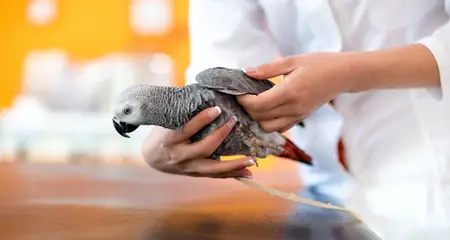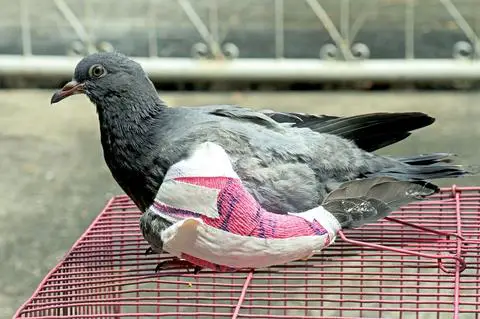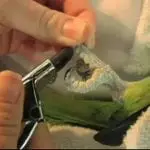Arguably the biggest reason why birds are able to fly is that they have bones that are so light that they won’t weigh the bird down whenever it is flying. However, when you consider how light and hollow a bird’s bones are, you also have to think about how fragile those bones are. A bird’s bones are so fragile that it can be quite easy for them to break their wings; something hits them hard enough. As such, a broken wing is something that is very common of an injury in a lot of birds.
That said, the risk that your pet bird will suffer from a broken wing is pretty high, especially if it is rather playful. This can be quite problematic in your case because this can be pretty traumatizing for a bird that really loves flying around. In some cases, a broken wing can even be detrimental to your pet bird’s survival.
So, if your pet bird suffers from a broken wing, you need to be able to treat it right away to allow it to recover quickly. You also do not have to worry because you can actually wrap the bird’s wing yourself before you can get it professional help from a veterinarian.
Precaution first

Precautionary measures are important before you try to treat your pet bird’s broken wing. After all, you are not only making sure that your bird is treated well enough, but you are also trying to make sure that you are safe while treating the bird.
· Wear gloves
First off, to protect yourself and the bird, wear a pair of gloves. This will help prevent the transmission of any harmful bacteria or disease between you and the bird while you are trying to treat it. Remember that the bird is in the middle of a stressful situation that will weaken its immune system. As such, it will be more susceptible to diseases that you might transmit if you treat it bear-handed.
The best type of gloves to use is gardening gloves such as cloth gloves because they will protect you from the bird’s sharp beak and claws. Surgical gloves should be avoided as the bird can easily rip them when you get too close to its beak and claws. If you do not have gloves around, try using a clean towel when you are handing the bird.
· Do not let the bird get too close to you
As much as possible, try keeping the bird from getting too close to you, especially your face. You should understand that the bird is under a stressful and difficult situation that can force it to snap at you because of the pain it is under. As such, keep it away from your vulnerable parts, such as your face. Even the friendliest of birds will not hesitate to attack you if they are under so much pain and stress. You would want to lose an eye or get your face all scratched up in the process of helping your pet bird.
· Avoid feeding the bird
Another precautionary step to take is to avoid feeding your bird. You should not give it any food or water because of how stressful the times are for it. Birds that are under a lot of stress do not like eating. And if you force them to eat food or drink water, there might be a risk that they will end up choking.
Protection
After taking the precautionary steps when you noticed that your pet bird has a broken wing, the next thing you need to do is to protect the bird. Do all you can to make sure that you put as much protection around the bird as possible to make it feel safe and less stressed from the situation it is under.
· Wrap it around something warm and soft
Wrapping the bird around something warm and soft will allow it to feel safe and comfortable so that it will feel less stressed. Using a nice and thick towel is a good idea as it will help calm the bird while making sure that it has enough cushioning between its broken wing and anything that may aggravate its injury.
· Place the bird in a safe container
To make the bird feel as safe as possible after wrapping it around something warm and soft, try to place it in a container. A shoebox will work. Add another layer of towels in the shoebox to make it much more comfortable for the bird. You can place the bird wrapped around the towel in the shoebox after that. It is important that the box has a lid so that it won’t try to escape and aggravate its injury while you are still in the middle of treating its broken wing. Do not move the box around so much as it might actually aggravate the broken wing.
· Add a heat source in the box
An injured and stress bird will be more susceptible to any disease brought about by the cold. In that case, try to add a heat source inside the box to help the bird feel warm. A bottle of water with hot or warm water will do the trick. You can place the bottle inside the box but also make sure that it is wrapped around something thick like a towel to prevent any direct contact between it and the bird.
Treating the bird

After calming the bird down and helping it feel more comfortable and less stressed, it is now time for you to treat its broken wing and wrap it.
· Check for any other injuries or wounds
Before wrapping the bird’s broken wing, check around the area of the wing to see if there are any other injuries or wounds. If there are wounds present, wash and clean them first before you try to treat the broken wing to make sure that the bird won’t get infected while you are treating it.
· Taping the wing
After checking the bird for any other signs of injuries, it is now time for you to tape the wing. Use a veterinarian bandage tape because this won’t stick on the bird’s feathers. At least a foot-long tape would work. Fold the bird’s broken wing against the side of its body and then wrap the tape around the body to make sure that the wing is held in place. The tape should be wrapped under the broken wing to make sure that the bird will still be able to move it around.
· Observe the bird
After taping the bird’s broken wing, try observing it for a while. Place it on solid ground to see if it is able to walk around. With the tape around its broken wing. At this point, the stress levels will go down, and the bird will be more receptive to getting handled with care. It might even try to eat and drink water.
Get professional help
After doing the preliminaries of treating your bird and wrapping its broken wing, it might be time for you to take it to the vet. After all, you might have overlooked any other injuries when you treated the bird. In any case, the bird’s broken wing might be worse than you originally thought it was. A vet will be able to help the bird more than you could. As long as you were able to treat it well at the start of its injury and help calm it down, you have already done your part.


